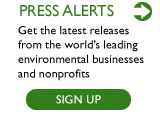<!–
<!–/* * Replace all instances of INSERT_RANDOM_NUMBER_HERE with
* a generated random number (or timestamp).
*
* The backup image section of this tag has been generated for use on a
* non-SSL page. If this tag is to be placed on an SSL page, change the
* 'http://ad10.walklightmedia.net/delivery/…'
* to
* 'https://ad10.walklightmedia.net/delivery/…'
*
* This noscript section of this tag only shows image banners. There
* is no width or height in these banners, so if you want these tags to
* allocate space for the ad before it shows, you will need to add this
* information to the tag.
*
* If you do not want to deal with the intricities of the noscript
* section, delete the tag (from … to ). On
* average, the noscript tag is called from less than 1% of internet
* users.
*/–>
… to
It seems as more and more of the fish available to us in the supermarket and in restaurants is farmed. Is this good or bad? Probably a bit of both. Raising fish in fish farms doesn’t impact the wild fish to any great extent, but fish farms must be well situated, and well run to prevent problems. They are not natural ecosystems!
ADVERTISEMENT
Aquaculture has become a booming industry in Chile, with salmon and other fish farmed in floating enclosures along the South Pacific coast. But as farmers densely pack these pens to meet demand, diseases can easily pass between fish — for example, an outbreak of infectious salmon anemia that emerged in 2007 caused the deaths of more than a million fish and threatened to cripple the industry. And unsustainable aquaculture methods can have a wider impact, spreading disease to the world’s already vulnerable ocean fisheries and contaminating the environment.
Earlier this year, Tamara Awerbuch Friedlander, an instructor in the Department of Global Health and Population at Harvard School of Public Health (HSPH), traveled to Chile to work with faculty members at the University of Antofagastato develop research and an academic curriculum focused on preventing the spread of diseases and parasites among farmed fish, and from aquacultures to the wild fish population, without the use of potentially harmful chemicals.
Awerbuch Friedlander uses mathematical modeling to study the complex social and biological systems behind the spread of diseases, and has previously focused on AIDS and Lyme disease, among others. In Antofagasta, she taught a three-week course on mathematical modeling to students, based on the long-running course she developed and teaches at HSPH. She described her approach as holistic. “I teach students to look at a range of factors relevant to the spread of a disease — such as ecological impact and human behavior — to develop a mathematical model. This can then be used to explore the effect of each factor in the presence of the others as well as new interventions.”
Fish farm in southern Chile image via Shutterstock.
Read more at the Harvard School of Public Health.
Terms of Use | Privacy Policy
2014©. Copyright Environmental News Network







